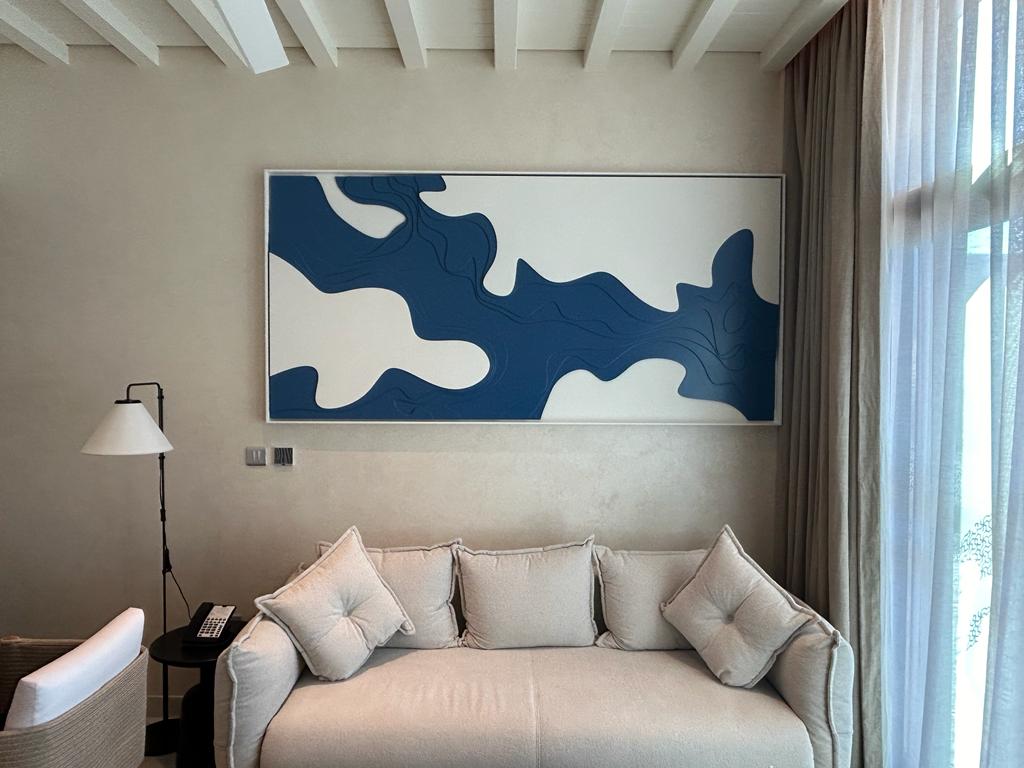
Traditional vs. Contemporary Wooden Art: Blending Old and New Styles
You must have heard the terms traditional and modern for wooden art; however, wooden carvings have been around for more than 1,000 years. The oldest wooden sculpture that still exists is a 7,200-year-old well in the Czech Republic.
Coming to Saudi Arabia, wooden art is an important part of Saudi culture and shows a deep connection to nature, craftsmanship, and heritage.
Although traditional wooden art holds a special place in the hearts of many, emerging contemporary artists are fusing this ancient craft with modern techniques to give it a fresh look.
In this article, we’ll explore the differences between traditional and contemporary wooden art and take a closer look at how these two unique styles blend together.
The Significance of Wooden Art in Saudi Culture
Wood has always been important in Saudi Arabia, where artists use it to make beautiful and useful things like doors, furniture, and window shutters. These wooden items are also carved with detailed designs, such as geometric patterns and flowers, showing the talent of the artists.
Over time, the skill of working with wood has been handed down through families, with Saudi artists valuing traditional methods. These wooden creations are not only practical but also carry cultural meaning. For instance, in Jeddah, the carved wooden windows called “Rawashin” are famous parts of the city’s architecture.
With that sorted, let’s have a look at the differences between traditional and wooden art.
Difference Between Traditional and Wooden Art
Origin
Let’s start with the origin of both forms of wooden art.
Traditional wooden art is connected to cultural heritage, spiritual beliefs, and practical uses. Whether it’s beautifully carved furniture, religious icons, or ceremonial objects, traditional wooden art often tells the story of a culture’s historical values, myths, and customs.
For example, in ancient Egypt, wooden sculptures were used for spiritual purposes, and in Europe, wooden carvings adorned gorgeous cathedrals.
Contemporary wooden art, on the other hand, focuses on personal creativity and takes ideas from many different cultures around the world. The artists have the freedom to explore new themes, ideas, and materials, moving away from traditional ways.
This includes abstract ideas, symbols, and fresh concepts. Contemporary artists are inspired by things like the environment, technology, modern design, and social issues, using wood to share their unique views.
Techniques and Craftmanship
Another main difference between traditional and contemporary wooden art is the methods and techniques used to create each work.
For instance, wooden art was crafted by skilled artists using tools and techniques that had been learnt over centuries. These traditional techniques often involved hand-carving, wood-turning, inlay, and marquetry and relied on the wood’s natural properties, such as grain, texture, and durability.
When it comes to modern art, artists still use traditional methods, but they also take advantage of new tools and tech. Things like laser cutting and 3D modeling have totally changed the game for contemporary wooden art. These technologies make it possible to create precise and detailed designs that would’ve been really tough to do by hand. Plus, artists can now play around with new shapes and sizes. Also, many modern wooden artists mix things up by using other materials like metal, glass, and plastic to create unique art.
Aesthetics and Design
Traditional wooden art is all about paying attention to delicate details, creating balance and harmony, and showcasing the natural beauty of wood. Artists often highlight the natural grain and texture of the wood, adding motifs like plants, animals, religious symbols, and geometric patterns.
This art is not just beautiful but also very practical, as the pieces serve both a decorations and are used in everyday life.
In contrast, contemporary wooden art takes a different approach compared to traditional art. Instead of simply preserving the natural beauty of wood, modern artists embrace minimalism, abstraction, and experimental forms. They use asymmetry, irregular shapes, and unconventional materials to create pieces that really stand out.
Purpose and Meaning
The purpose and meaning behind traditional and contemporary wooden art also differ significantly.
Traditional wooden art has always had specific purposes, whether for religious ceremonies, rituals, or practical use. A good example would be wooden masks, totems, and idols that were used in rituals and religious ceremonies. Also, beautifully carved furniture served both functional and decorative purposes in homes.
If we talk about today’s contemporary wooden art, it is often thought-provoking. It reflects the artist’s personal experiences and pushes the boundaries of traditional art and craftsmanship. Many of these works are purely aesthetic or philosophical in nature, and they usually do not serve a functional purpose.
Blending Traditional and Contemporary Wooden Art in Saudi Arabia
Now that artists have explored both traditional and contemporary wooden art styles, they want more out of it! And for this, they came up with a solution: fusing old and new wooden art!
Today, blending traditional and contemporary wooden art has become quite common in Saudi Arabia. This reflects the Kingdom’s evolution from the past to the future. Saudi artists are increasingly combining traditional motifs, techniques, and materials with modern design and technology to create hybrid wooden art.
Here are some examples of old and new wooden art combos in Saudi Arabia:
Nasser-Al-Salem’s Kul
Nasser Al-Salem is known for his incredible talent in mixing traditional Islamic calligraphy with modern art styles. He uses classic calligraphy in abstract and contemporary ways. For instance, his artwork “Kul” combines traditional calligraphy with minimalist design, resulting in a beautiful blend of the old and the new. He loves experimenting with 3D forms and installations to give Islamic script a fresh and modern look.
Ahmed Mater’s Illumination
Another contemporary Saudi artist is Ahmed Mater, who combines traditional Islamic designs with modern technology in his artwork. One of his famous pieces is “Illumination,” in which he combines traditional Islamic manuscript patterns with X-ray technology to create a beautiful blend of spirituality and science.
Manal AlDowayan’s Suspended Together
Manal AlDowayan is a modern Saudi artist. She focuses on the roles of women in Saudi society. In her artwork “Suspended Together,” she uses traditional symbols like doves and combines them with modern art. Each dove represents a permit that shows the travel restrictions for women.
Dia Azzawi’s Mada’in Saleh Chair
Jeddah has an outdoor sculpture museum with a mix of traditional and contemporary art. The museum features installations that combine modern abstract forms with Islamic and Arab themes.
One example is the “Mada’in Saleh Chair” by Dia Azzawi, which blends ancient Arabian motifs with a modern, minimalist design. This sculpture celebrates the region’s rich history with contemporary artistic techniques.
Conclusion
Wooden art is timeless; however, blending old and new wooden art techniques creates wonderful artwork that deserves a thumbs up. In this guide, we have discussed the differences between traditional and modern art, and some examples of their fusion.
For more ideas of intricate wooden art, check out our impressive portfolio. And, if you have an out-of-the-box wooden art idea that you want to bring to life, contact us, and our designers will design it exactly as you envisioned it!
